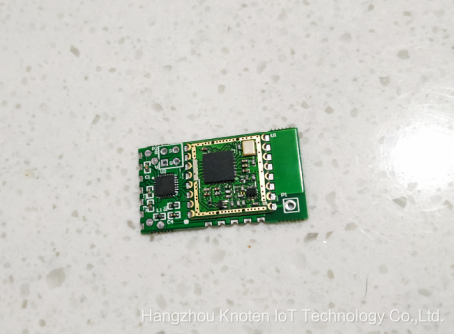LoRa Development and Application 1: Introduction to the Development Board
LoRa-IoT Development Board
1 Introduction
From the conception of the "Internet of Things" to its widespread application today, in just over 20 years, the Internet of Things has developed rapidly and has blossomed in many industries. In the development process of the Internet of Things, various wireless communication technologies have been born: LoRa, GPRS, Bluetooth, Zig-Bee, WiFi, etc. Based on these wireless technology standards, a series of products have been born.
From the perspective of the current Internet of Things industry, relevant experts predict that by 2020, about 12 billion Internet of Things sensors and devices will be put into use, and this number will continue to grow.
There are more and more requirements for low power consumption and long-distance use. Regardless of application scenarios or design requirements, more users or developers want products to be easy to use, lower power consumption, longer life, and longer distances. LoRa communication technology The advantages in this regard are increasingly reflected.
2. LoRa communication
LoRa (Long Range) is a low-power, long-distance communication technology. Under the same power consumption, the transmission distance is longer. LoRa has been widely used in the fields of burglar alarm, smart home, smart fire protection, remote meter reading, and electricity safety monitoring.
LoRa uses the ISM (Industrial Scientific Medical) frequency band, which can be used without authorization, without charging related fees, and supports users to build networks; while NB-IoT uses the operator frequency band, which is provided by the operator. multiplexed on the cellular base station. For some enterprises, they do not want the data of the equipment to be obtained by the operator, and hope to build a network by themselves to collect, control or transmit the data of the equipment.
3. LoRa-IoT Development Board
In order to facilitate the use of relevant developers, scholars and DIY enthusiasts, we have developed an IoT development board KNT-DB8-LR (hereinafter referred to as LoRa-IoT) based on LoRa communication technology. The physical picture of the development board is as follows:

The size is still very small , LxW is only 3.28cmx1.28cm.

The communication, programming and antenna interfaces of the development board have been reserved, and the relevant pin definitions have been given. There are three main reasons why the development board is designed with this size and structure:
First: Applicable people, whether professionals or related learners, can get started quickly;
Secondly: From a practical point of view, users can directly use other products after learning or debugging;
Therefore, the LoRa-IoT development board looks different from other development boards on the market. Many development boards are as rich in functions as possible, and all MCU pins are drawn out for use, focusing on helping users understand the resources and usage of MCU; while LoRa- The IoT development board focuses on helping users understand the LoRa communication process and its use in actual scenarios and products.
The LoRa-IoT development board can configure LoRa through the programming interface of the MCU, or through the serial port assistant using AT commands.
The development board adopts the stamp hole interface and does not use metal vias, mainly from the aspects of size, practicability and versatility. If metal vias are used, pin headers need to be used when connecting, which will increase the height between the development board and the bottom plate. In order to avoid some devices due to the limitation of internal space, stamp holes are used.
When using the UART interface of the LoRa-IoT development board, you can connect the related interfaces on the perforated board through pin headers. For specific operations, you can watch: LoRa-IoT development board welding video
The welding reference diagram is as follows:

4. Application case
More and more electronic devices are powered by batteries, which are very sensitive to power consumption. Although the device is usually in a sleep state, if the current is too large during sleep, the battery life will be shortened. Examples include smoke alarms, such as remote meter reading or handheld devices.
The following is the LoRa-IoT development board application case.
Product Example 1: Smart Smoke Sense
Traditional smoke detectors generally send out sound and light alarms. If the user goes out, even if there is an alarm message, he cannot know it immediately, which will cause a serious safety accident.
When the smart smoke detector detects that the smoke reaches the concentration threshold, in addition to sound and light alarms, it will also send the alarm information to the platform through the gateway, and users can see the alarm information on the platform or mobile terminal.
Smart Smoke Detector Appearance:

Internal Structure Diagram:

Product Example 2: Smart Safety Power Monitoring Device
The smart and safe power consumption monitoring device can collect parameters such as voltage, current, residual current, and temperature in the line under test, and users can see these parameters on the platform. The equipment can be used in single-phase and three-phase power applications, reducing safety problems caused by equipment lines or loads.
Equipment appearance:

Internal structure diagram:

From the development of the Internet of Things industry in recent years, the Internet of Things has involved all aspects of our social life. It not only promotes social changes, but also makes our lives more convenient.
